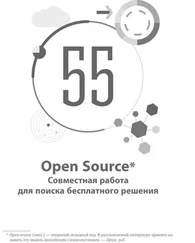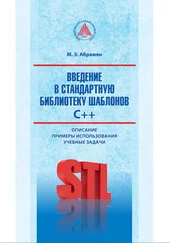103 См., например: McQuillan, J. (1997). 'The Effects of Incentives on Reading'. Reading Research and Instruction, 36,111-25.
104 Kohn, A., op. cit.
105 Amabile, Т. M. (1985). 'Motivation and Creativity: Effects of Motivational Orientation on Creative Writers'. Journal of Personality and Social Psychology, 48, 393-9.
106 Deci, E. L. (1971). 'Effects of externally mediated rewards on intrinsic motivation'. Journal of Personality and Social Psychology, 18,105-15.
107 Lepper, M. R., Greene, D., & Nisbett, R. E. (1973). 'Undermining children's intrinsic interest with extrinsic reward: A test of the "overjustification" hypothesis'. Journal of Personality and Social Psychology, 28,129-37.
108 Janis, I. L., & Mann, L. (1965). 'Effectiveness of emotional role playing in modifying smoking habits and attitudes'. Journal of Experimental Research in Personality, 1, 84–90.
109 Mann, L. & Janis, I. L. (1968). 'A follow-up study on the long-term effects of emotional role-playing'. Journal of Personality and Social Psychology, 8, 339-42.
110 Pliner, P., Hart, H., Kohl, J., & Saari, D. (1974). 'Compliance without pressure: Some Further Data on the Foot-in-the-Door Technique'. Journal of Experimental Social Psychology, 10, 17–22.
111 Beaman, A. L., Cole, M. C, Preston, M., Klentz, В., & Meh-rkens-Steblay, N. (1983) 'Fifteen years of foot-in-the-door research: a meta-analysis'. Personality and Social Psychology Bulletin, 9,181-96.
112 Meineri, S. & Gueguen N. (2008). 'An Application of the Foot-in-the-Door Strategy in the Environmental Field'. European Journal of Social Sciences, 7, 71-4.
113 Gueguen, N., & Jacob, C. (2001). 'Fund-raising on the web: The effect of an electronic foot-in-the-door on donation'. Cy-berPsychology & Behavior, 4, 705-9.
114 Gueguen, N., Pascual, A., Marchand, M. & Lourel, M. (2008). 'Foot-in-the-Door Technique Using a Courtship Request: A Field Experiment'. Psychological Reports, 103, 529-35.
115 Cialdini, R. В., Cacioppo, J. Т., Basset, R., & Miller, J. A. (1978). 'The low-ball procedure for producing compliance: Commitment then cost'. Journal of Personality and Social Psychology, 36, 463-76.
116 Zeigarnik, В. V (1927). 'Uber das Behalten von erledigten und unerledigten Handlungen (The Retention of Completed and Uncompleted Activities)', Psychologische Forschung, 9,1-85.
117 Staub, E. (1989). The Roots of Evil. New York: Cambridge University Press.
118 Purcell, A. H. (1981). 'The world's trashiest people: Will they clean up their act or throw away their future?'. The Futurist, 2, 51-9.
119 Burn, S. M. & Oskamp, S. (1986). 'Increasing Community Recycling with Persuasive Communication and Public Commitment', Journal of Applied Social Psychology, 16, 29–41.
120 Martin, S. (1993). What You Can Change and What You Can't: The Complete Guide to Successful Self-Improvement. New York: Knopf.
121 Mann, Т., Tomiyama, A. J., Westling, E., Lew, A., Samuels, В., & Chatman, J. (2007). 'Medicare's search for effective obesity treatments: Diets are not the answer'. American Psychologist, 62, 220-33.
122 Forster, J. (2003). 'The influence of approach and avoidance motor actions on food intake'. European Journal of Social Psychology, 33, 339-50.
123 Webber, L. S., Catellier, D. J., Lytle, L. A., Murray, D. M., Pratt, C. A., Young, D. R., Elder, J. R, Lohman, T. G., Stevens, J., Jobe, J. В., & Pate, R. R. (2008). 'Promoting Physical Activity in Middle-School Girls: Trial of Activity for Adolescent Girls'. American Journal of Preventative Medicine, 34,173-84.
124 Schachter, S. (1968). 'Obesity and eating: internal and external cues differentially affect the eating behavior of obese and normal subjects'. Science, 161, 751-6.
125 Nisbett, R. (1968). 'Determinants of food intake in obesity'. Science, 159,1254-5.
126 Goldman, R., Jaffa, M., & Schachter, S. (1968). Tom Kippur, Air France, dormitory food, and eating behavior of obese and normal persons'. Journal of Personality and Social Psychology, 10,117-23.
127 Wansink, B. (2004). 'Environmental Factors that Increase the Food Intake and Consumption Volume of Unknowing Consumers'. Annual Review of Nutrition, 24, 455-79.
128 Herman, С P, Olmsted, M. P, & Polivy, J. (1983). 'Obesity, externality, and susceptibility to social influence: An integrated analysis'. Journal of Personality and Social Psychology, 45,926-34.
129 Sentyrz, S. M., & Bushman, B. J. (1998). 'Mirror, mirror on the wall, who's the thinnest one of all? Effects of self-awareness on consumption of fatty, reduced-fat, and fat-free products'. Journal of Applied Psychology, 83, 944-9.
130 Neal, D., Wood, W, Wu, M., and Kurlander, D. (2011). 'The Pull of the Past: When Do Habits Persist Despite Conflict With Motives?'. Personality and Social Psychology Bulletin, 37, 1428-37.
131 Riskind, J. (1984). 'They stoop to conquer: Guiding and self-regulatory functions of physical posture after success and failure'. Journal of Personality and Social Psychology, 47, 479-93.
132 Hyung-il, A., Teeters, A., Wang, A., Breazeal, C. & Picard, R. (2007). 'Stoop to Conquer: Posture and affect interact to influence computer users' persistence'. The 2nd International Conference on Affective Computing and Intelligent Interaction (ACII2007), 12–14 September, Lisbon, Portugal.
133 Fletcher,В. (C). &Stead,B. (2000). (Inner) FITnessandtheFIT Corporation (Smart Strategies). London: International Thomson Press.
134 Hung, Iris W and Aparna A. Labroo (2011), 'From Firm Muscles to Firm Willpower: Understanding the Role of Embodied Cognition in Self-Regulation'. Journal of Consumer Research, 37, 1046–1058.
135 Friedman, R., Elliot, A.J. (2008). 'The effect of arm crossing on persistence and performance'. European Journal of Social Psychology, 38, 449-61.
136 Fletcher, B. (C)., Page, N. & Pine, K. J. (2007). 'A new behavioural intervention for tackling obesity: Do something different'. European Journal of Nutraceuticals and Functional Foods, 18, 8-10. Fletcher, B. (C)., Hanson, J., Pine, K. J. & Page, N. (2011). 'FIT – Do something different: A new psychological intervention tool for facilitating weight loss'. Swiss Journal of Psychology, 70, 25–34. Fletcher, В. (C), & Page, N. (2008). 'FIT Science for weight loss – a controlled study of the benefits of enhancing behavioural flexibility'. European Journal of Nutro-ceuticals & Functional Foods, 19, 20-3.
137 См. например: Fletcher, B. (C), Penman, D., & Pine, K. J. (2006). The No Diet Diet: Do Something Different. London: Orion. Fletcher, B. (C), & Pine, K. J. (2012). Flex: Do Something Different. Hatfield: University of Hertfordshire Press.
138 Korea: Twenty-Three Americas'. Time magazine, 5 October 1953.
139 Aronson, E. (2004). The Social Animal (Ninth Edition). New York: Worth Publishers, p.150.
140 Kassarjian, H. H., and J. B. Cohen. (1965). 'Cognitive dissonance and consumer behavior', California Management Review, 8, 55–64.
141 Jones, E. E., & Kohler, R. (1958). 'The effects of plausibility on the learning of controversial statements'. Journal of Abnormal and Social Psychology, 57, 315-20.
142 Bickman, L. (1972). 'Environmental attitudes and actions', Journal of Social Psychology, 87, 323-4.
143 Batson, С D., Thompson, E. R., & Chen, H. (2002). 'Moral hypocrisy: Addressing some alternatives'. Journal of Personality and Social Psychology, 83, 330-9. Batson, C. D., Thompson, E. R., Seuferling, G., Whitney, H., & Strongman, J. (1999). 'Moral hypocrisy: Appearing moral to oneself without being so'. Journal of Personality and Social Psychology, 77, 525-37.
Читать дальше
Конец ознакомительного отрывка
Купить книгу












